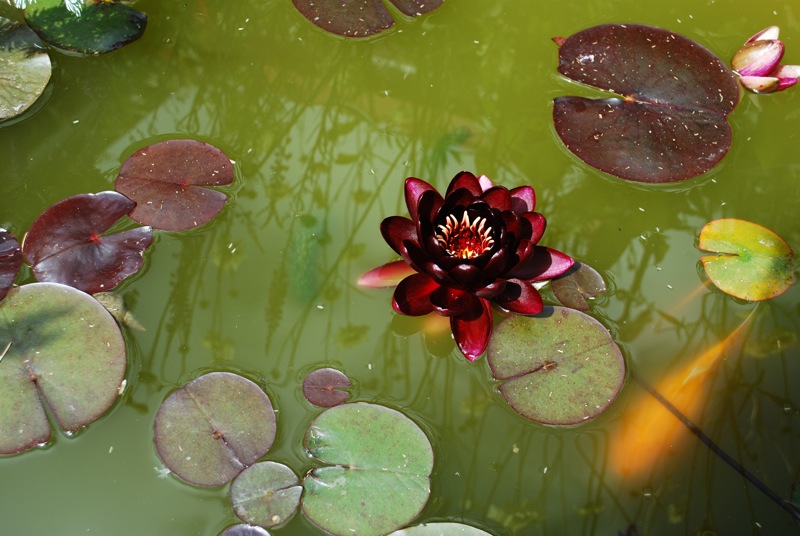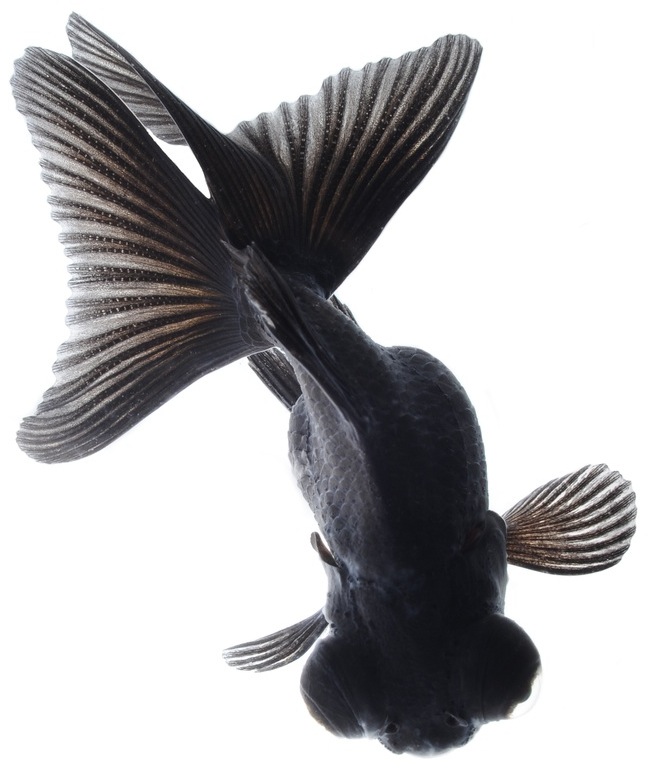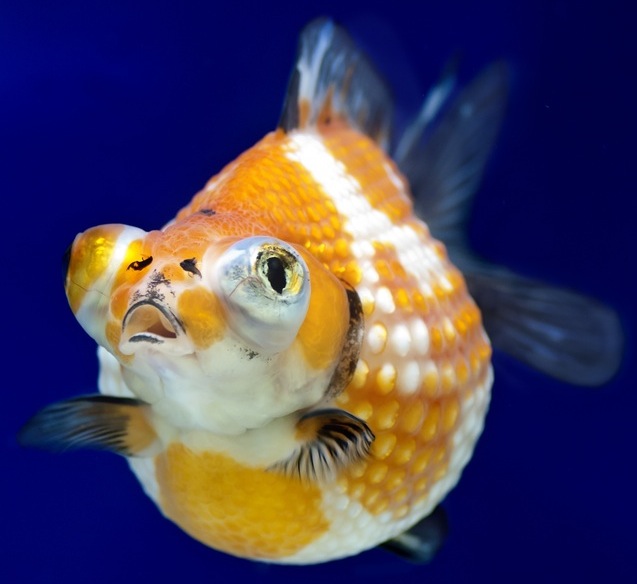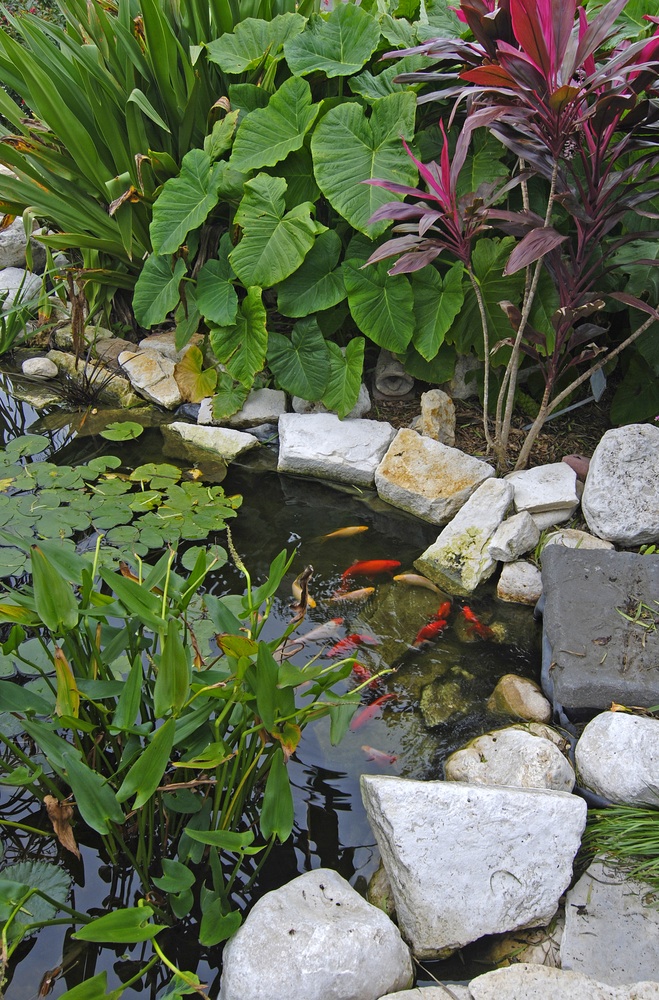We built a pond this year, and stocked it with various goldfish, including shubunkins and moors. Will they be able to stay outside through the winter? What about feeding them over this period?

Goldfish can be divided into two groups, based on their body shape. There are those such as shubunkins and comets, which are similar to the ordinary goldfish (left) in appearance, being reasonably slender and stream-lined.

The so-called fancy breeds, which include the moor (above), pearlscale (below) and fantails have a shortened and more rounded shape. This affects the way that they swim, with these fancy varieties being less powerful as swimmers than the ordinary type of goldfish.

The ancestors of all these fish are carp which originate from China, and they are quite hardy. In the case of the fancy breeds however, the change in body shape has affected a vital internal part of their body as well. The swim bladder, which is the air-filled sac providing buoyancy in the fish's body, is compressed so that fancy goldfish can encounter greater difficulties in maintaining their position in the water.
Feeding

Once the water temperature drops, the colder water means that the fancy fish will find it harder to swim, as their body metabolism slows, so it is safest to bring these particular goldfish indoors for the winter.
The elaborate fins of goldfish such as veiltails are also far more likely to become ragged and may even be attacked by fungus because the fish's ability to fight off infections is reduced at this stage, again because of their colder surroundings at this time of year.
As the water temperature falls, so the appetite of the goldfish in a pond declines, and they become more sluggish. It is not recommended to feed the goldfish once the water temperature dips below 50°F (10°C), simply because even if they eat the food, they will not be able to digest it properly.
This is then likely to remain in their intestinal tract and could start to putrefy here, which would obviously be harmful. As an interim measure, there are special foods available which can be easily absorbed and are recommended for use in the autumn, as the water temperature starts to fall, and then again in the spring when the fish start to become more active again.
* Click here for further information about looking after goldfish over the winter.